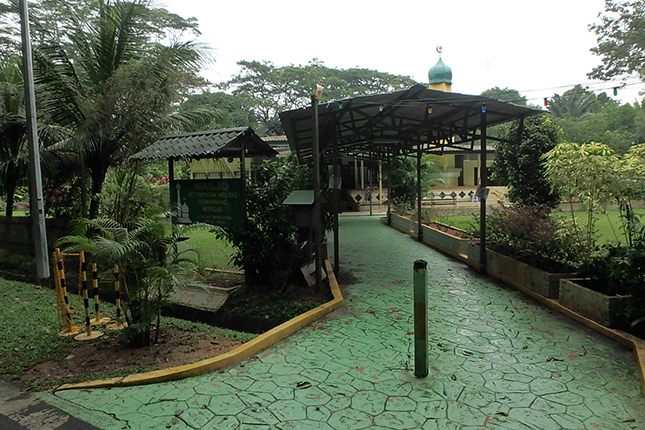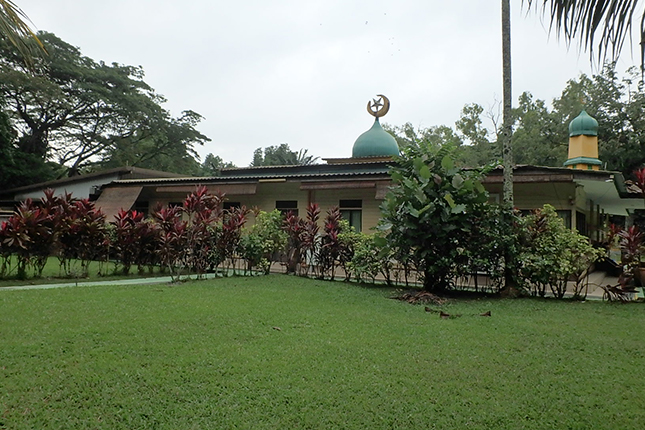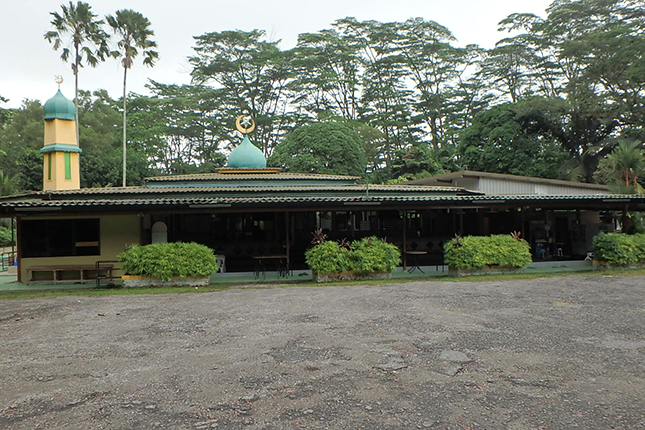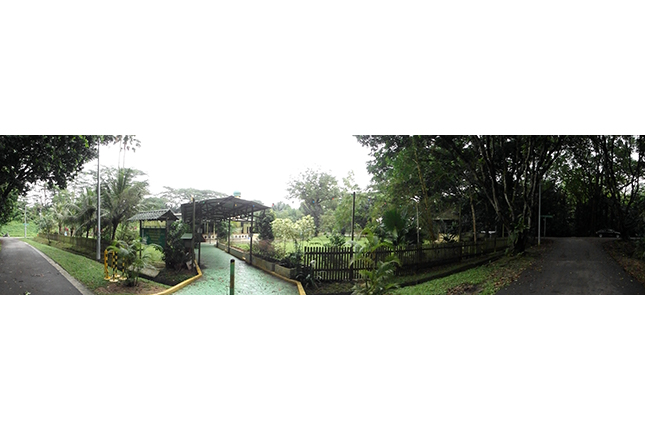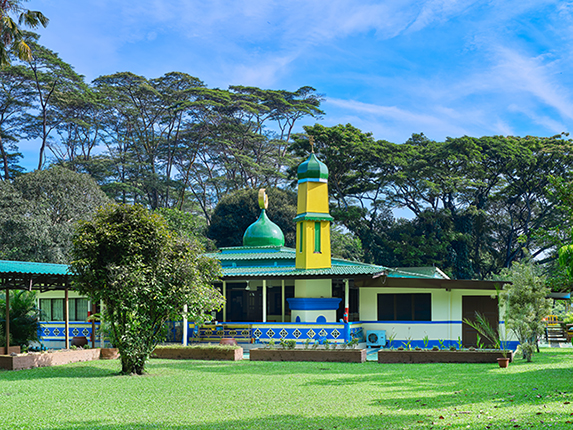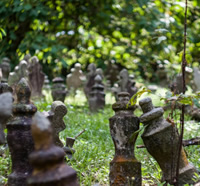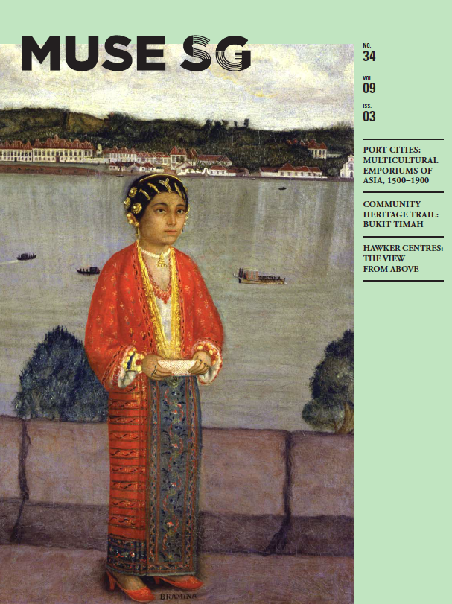One of the last vestiges of a Malay kampung mosque in Singapore, the Masjid Petempatan Melayu Sembawang — hidden far off from the main road — has outlived the kampung it once served.
Set in the middle of a forest clearing lies a rare sighting of a kampung mosque — one of the remaining few lefts in Singapore.
Built in 1963, Masjid Petempatan Melayu Sembawang is a single-storey mosque with a tall minaret distinctively painted in yellow and green. At the peak of the minaret is an onion-shaped dome atop with crescent and star, which is a symbol of Islamic religion.
The mosque catered to Muslims residing in the Malay settlement of Petempatan Melayu Sembawang — from which the mosque derived its name. The settlement was formed by an amalgamation of nearby kampungs, namely Lobang Bom, Tanjong Irau, Wak Hassan, and Tengah. The mosque was originally named Masjid Kampung Tengah.
Prior to its establishment, Muslims in Petempatan Melayu Sembawang prayed at suraus (small prayer houses) or at the former Masjid Jumah Sembawang located along Sembawang Road. Eventually, the growing Malay Muslim community raised funds to build a mosque closer to home. Donations included a notable $10,000 contribution from the Lee Foundation.
In 1980s, there were plans to demolish the mosque as residents began to move away from the dismantled Malay settlement into public housings. The mosque was eventually granted a Temporary Occupation Lease (TOL) — thanks to the efforts of many residents and then Member of Parliament for Sembawang, Dr Tony Tan.
Extensive renovation works were carried out in 1984, and further upgrading was undertaken in 2007. Interestingly, the mosque’s entrance continues to be sheltered by a tall rubber tree — a remnant of the former rubber plantations within the Malay settlement.
Although the mosque is remotely located, it is still active during Friday prayers and Ramadan. Weekend madrasah classes, as well as religious classes, continue to be conducted within its premises.
Buildings and sites featured on Roots.SG are part of our efforts to raise awareness of our heritage; a listing on Roots.SG does not imply any form of preservation or conservation status, unless it is mentioned in the article. The information in this article is valid as of December 2019 and is not intended to be an exhaustive history of the site/building.




